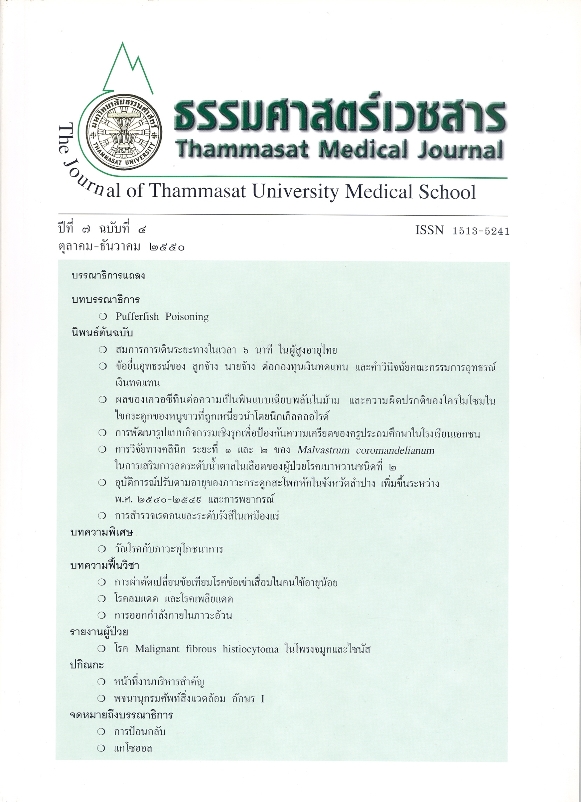Effects of Quercetin on Acute Toxicity of Rat Spleen and Chromosome Aberrations in Bone Marrow Induced by Nickel Chloride
Keywords:
quercetin, chromosome aberrations, spleen toxicity, nickel chloride, เควอซีทิน, ความผิดปรกติของโครโมโซม, ความเป็นพิษต่อม้าม, นิกเกิลคลอได์Abstract
Quercetin, one of the major flavonoids in some fruits and vegetables, has much stronger antioxidative and anticarcinogenic activities. The aim of this study was to evaluate the protective role of quercetin in attenuating the histological changes of spleen and chromosome aberrations in rat bone marrow after NiCl2 acute poisoning. Male Wistar rats received either NiCl2 alone in the dose of 50, 150, and 300 mg/kg and pretreatment with quercetin in the dose of 50, 100, and 200 mg/kg for one hour before administration of NiCl2 300 mg/kg by single oral gavage. Spleen was removed and cells in bone marrow were collected at 24 hours after treatments. The results showed that the histology of spleen was observed to remain unchanged following exposure to all doses of NiCl2. However, the chromosome aberrations were increased significantly by NiCl2 300 mg/kg as compared to the control group (p < 0.001). Interestingly, the increase of chromosome aberrations induced by NiCl2 300 mg/kg could be reduced significantly by quercetin pretreatment at dose of 100 and 200 mg/kg (p < 0.05), but not in 50 mg/kg group. Our findings provide evidence that quercetin at dose of 100 and 200 mg/kg had a possible effect to protect against NiCl2 induced chromosome aberrations in rat bone marrow. The possible mechanisms of quercetin may be involved its property in act as a free radical scavenger, or its indirect action in reducing the level of oxygen reactive species.
Key words : quercetin, chromosome aberrations, spleen toxicity, nickel chloride



